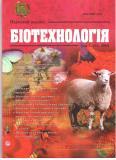ISSN 1995-5537

“Biotechnology” journal Vol. 1, No.1, 2008
P. 116-122, Bibliography. 20, Ukrainian.
Universal Decimal classification: 579.852.11.222
MICROBIAL α-AMYLASES: ISOLATION, PURIFICATION
AND PRACTICAL USAGE
L. D. Varbanets, K. V. Avdiyuk, N. V. Borzova
Institute of Microbiology and Virology of National Academy of Sciences of Ukraine, Kyiv
The α- amylase family is the largest family of glycoside hydrolases, transferases and isomerases, comprising in clаn GH–H. The enzymes of this family, except of α-1,4-, α-1,6-bonds, are able to hydrolyse α-1,-1, α-1,2-, α-1,3-, α-1,5-glycosidic bonds, contain 4 conserved aminoacid residues (Asp204, Asp206, Glu230 и Asp297) and have (β/α)8 or TIM barrel catalytic domain. The questions conserning methods of isolation and purification of α-amylases, which include the precipitation of organic solvents and neutral salts, dialysis, ultrafiltration, gelfiltration, chromatography, electrophoresis are discussed. The current data on possibility of α-amylases from different taxonomic groups of microorganisms, in particular, bacteria and micromycetes are given. Physicochemical properties of α-amylases, its pH- and thermooptimum, рН- and thermostability, molecular masses, influence of metal ions and different chemical reagents are discussed in detail. It’s shown the possibility of α-amylases usage in different branches of industry — food, detergent, paper, textile, pharmaceutical.
Кey words: microbial α-amylases, physicochemical properties, practical usage.

